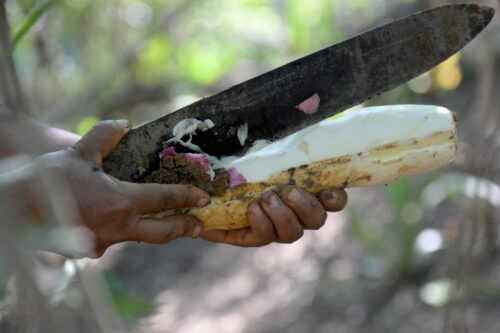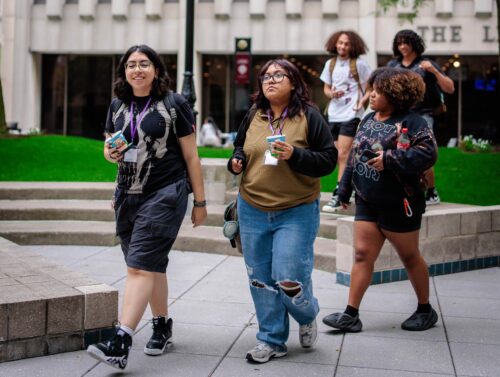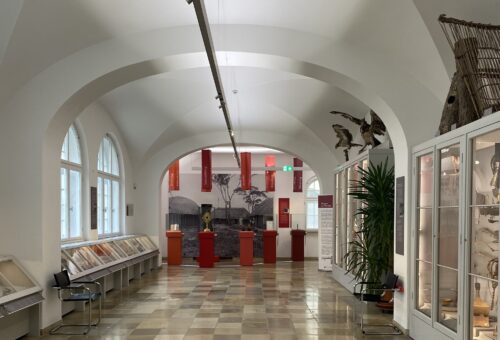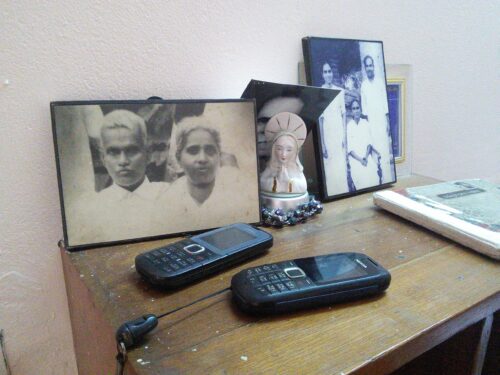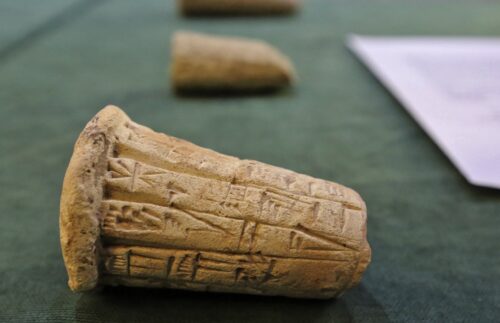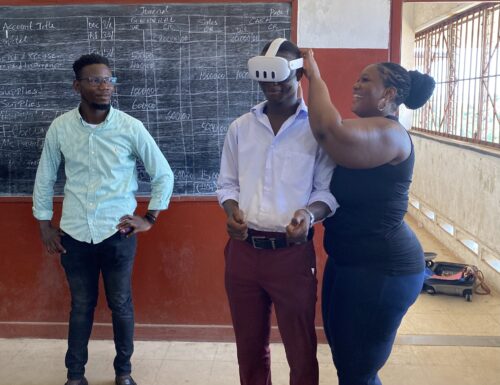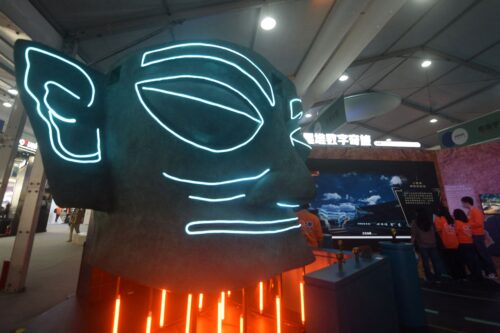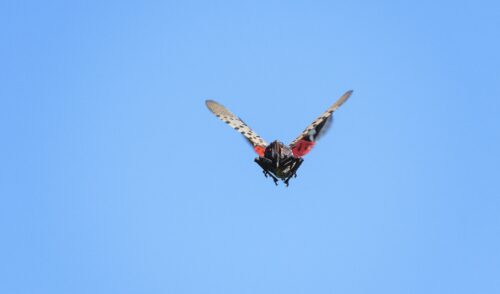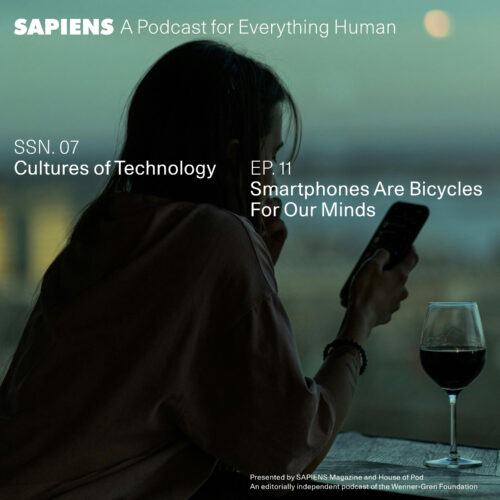Where is your smartphone right now?
If you’re like most smartphone users in the United States, it’s probably within a few feet of your reach, if not sitting in your hand. In the last 15 years, smartphones have quickly, seamlessly, and profoundly been embedded in the daily lives of most Americans. There are now few, if any, domains of modern life that are unaffected by smartphone use.
This episode explores our interactions and relationships with these pocket-sized computers we call smartphones through the research of Alberto Navarro, a doctoral student at Stanford University. Drawing from inventor Steve Jobs’ view that the computer represents “the equivalent of a bicycle for our minds,” Navarro explores what computers represent for humans in evolutionary and energetic terms.
Alberto Navarro is a Ph.D. candidate in anthropology at Stanford University. He is interested in how tools allow humans to flexibly modify the structure and functions of their bodies and minds. Following in the anthropological tradition of making the familiar strange, his dissertation explores ways in which smartphone use in the United States is transforming many of the most basic features of human existence and experience. He believes improving our relationship with smartphones is one of the most impactful things we can do to enhance our everyday performance and well-being.
Check out these related resources:
SAPIENS: A Podcast for Everything Human is produced by House of Pod. The executive producers were Cat Jaffee and Chip Colwell. This season’s host was Eshe Lewis, who is the director of the SAPIENS Public Scholars Training Fellowship program. Dennis Funk was the audio editor and sound designer. Christine Weeber was the copy editor.
SAPIENS is an editorially independent magazine of the Wenner-Gren Foundation and the University of Chicago Press. SAPIENS: A Podcast for Everything Human is part of the American Anthropological Association Podcast Library.
This episode is part of the SAPIENS Public Scholars Training Fellowship program, which provides in-depth training for anthropologists in the craft of science communication and public scholarship, funded with the support of a three-year grant from the John Templeton Foundation.
Smartphones Are Bicycles for Our Minds
[introductory music]
Voice 1: What makes us human?
Voice 2: A very beautiful day.
Voice 3: Little termite farm.
Voice 4: Things that create wonder.
Voice 5: Social media.
Voice 6: Forced migration.
Voice 1: What makes us human?
Voice 7: Stone tools.
Voice 8: A hydropower dam.
Voice 9: Pintura indígena.
Voice 10: Earthquakes and volcanoes.
Voice 11: Coming in from Mars.
Voice 12: The first cyborg.
Voice 1: Let’s find out. SAPIENS: A Podcast for Everything Human.
Eshe Lewis: Do you have a smartphone? Do you think you could live your day-to-day life without it? How does your relationship with it change your body and your mind?
In this episode, Alberto Navarro explores some of these questions with the editor-in-chief of SAPIENS, Chip Colwell.
Chip Colwell: All right. Hey, Alberto.
Alberto Navarro: Hey, Chip.
Chip: So let’s start with this question: Do you know where your smartphone is right now?
Alberto: Yeah, it’s right in my hand, actually [laughs].
Chip: Mine, too [laughs].
Alberto: Yeah, I think that’s pretty typical for most smartphone users. It’s in our hand or right next to our body for most of the day, whether we’re eating or sleeping or even using the restroom. And I really like starting a lot of my interviews with that question because I think it helps put into perspective how attached we are to these devices.
And there’s actually this quote from a Supreme Court ruling in 2014 that I really love. In the ruling, they say that “modern cellphones are now such a pervasive and insistent part of daily life that the proverbial visitor from Mars would assume that they were an important feature of human anatomy.”
Chip: That seems about right [laughs].
Alberto: Yeah, so I like thinking about the proverbial anthropologist coming in from Mars and seeing people with smartphones for the first time. And I think that would definitely ring true.
Chip: That is an amazing quote and captures so much of this almost kind of symbiotic relationship that we’ve now built with our phones, right?
Now let me let me step back. How did you get interested in this? How did you come to be so fascinated by cellphones and our relationship to them?
Alberto: I think people in our age group grew up in a really interesting time. People in my age group were the last to really have a childhood where smartphones were still the stuff of science fiction, and I think it gives us a very distinctive perspective. So we weren’t really digital natives, born into a world where these little computers are so ubiquitous, but rather we witnessed this seismic shift firsthand and really saw the change that this brought in terms of communication, entertainment, and the way that we socialize.
Chip: So in a sense, it’s just that utter fascination of how we went from a world somehow without cellphones to our world now where it’s so integral to everything we do.
Alberto: Yeah, and, more broadly, I can’t really think of another technological device in human history that has so quickly, so seamlessly, and so profoundly embedded itself in our lives. And you’re right. It’s difficult to think about a world now without smartphones.
But it was really only in the last 15 years or so that they were introduced. Since then, we’ve rapidly become a nation of smartphone users. And I think the latest Pew Research, as of 2021, shows that 85 percent of Americans own a smartphone, and that figure is a lot higher for younger people. So for those under the age of 50, 95 percent of people own and regularly use a smartphone.
Chip: I love your research topic because it’s something my family certainly thinks a lot about. You know, it’s everything from me having a 12-year-old who doesn’t have a smartphone yet and trying to figure out, “OK. When do we introduce it? How do we introduce it?” It’s inevitable, you know? But how do we do it in an intentional way that doesn’t just totally distort her world?
And then my wife did a cellphone detox last month. She went a whole month without using her phone, and what does that mean? How do you live a modern life without a modern phone became a real question in our household. And that’s just in my own home. So I think probably so many people are trying to make sense of what this technology means in their lives. It is so new. It’s so novel, and it’s always changing, and it’s just crazy how central it’s become.
There’s so many different ways of studying the human relationship to our phones, right? I mean, you could study it psychologically. You could study it from an economic perspective. You’re an anthropologist. So what does it mean to study cellphones as an anthropologist?
Alberto: A lot of people, when they think about anthropology, think about the study of distant or ancient cultures. But anthropology actually provides a really good lens for us to look at our own cultural practices. And one of the things that it does really well is it can help us make the familiar strange. And by that, I mean that it can help us see the extraordinary in the ordinary, to foster a sense of wonder and awe about things that we might otherwise take for granted in our lives.
Chip: That’s such a fascinating way of thinking about studying cellphones. I can think about the very first time a friend introduced me to a smartphone and the way they navigated the screen and all of the different things you could do on it. And I was just blown away. It was this extraordinary tool. And now that extraordinary tool has become ordinary and everyday. But maybe the lens of anthropology is then helping us think about it as extraordinary again.
So how exactly do you do that as an anthropologist? What does it mean to study this exotic tool and think about it as this strange part of our lives that otherwise would be so familiar? How do you actually study it?
Alberto: That’s sort of a mindset thing, to think about the sort of basic assumptions and beliefs that we have about these things. One way is to start [with], “What actually is a smartphone?”
The word “smartphone” is, I think, a bit of a misnomer, actually. It’s misleading in that it doesn’t really reflect the true nature and function of these devices, how we typically use these devices. A smartphone I don’t think is so much a phone as it is a pocket-sized computer. So when we think about phones, the primary function of a phone is voice communication. Eventually, we supplemented that with text messages and such.
But what do you mostly use your smartphone for?
Chip: Almost everything [laughs]. But right now, I’m using it mostly to organize pickleball games. I’m an obsessive pickleball player, and so I send out all kinds of texts. And I have apps I use to organize games and reserve courts and things like that. So I’d say that’s probably the most dominant use of my smartphone at the moment.
Alberto: I think these devices for most people have become their primary computers, and we don’t really think about them as our PC.
Chip: No, that’s definitely true. I’m using it to write messages, to write emails, to get news … FaceTiming, connecting with people, to call. It really is a computer in every sense. But actually, if we maybe go even a little deeper down the rabbit hole: If smartphones are pocket-sized computers, then what are computers?
Alberto: I think there are a lot of different ways that we could approach that question. But one of my favorite anthropological answers actually comes from a 1990 interview with Steve Jobs. In this interview, he builds a metaphor to describe what a computer represents for humans. So he points to a study that compares the locomotive efficiency of different species. They calculate how many calories it would take an individual of that species to get from a hypothetical point A to point B. And in this interesting comparison, the condor actually topped the list. And, you know, being from California, I’ve always had this big fascination with condors. I’m not sure if you’ve ever seen one in real life, but …
Chip: I don’t know if I have, actually.
Alberto: Yeah, their wingspans can be up to 9 ½ feet long.
Chip: Wow!
Alberto: And it’s this really large wingspan that makes their body optimal for catching thermal updrafts. And they rise using these updrafts, gaining altitude with minimal effort. And then they just glide for very long distances. So they don’t have to spend a lot of energy to get far. But in that same study, humans had a pretty unimpressive showing. We came in at the bottom third.
Chip: OK.
Alberto: But again, for this study, they considered a human and their basic body—so a body unmodified by tools.
But then, in 1973, somebody at Scientific American had, I think, the brilliant idea of testing a human on a bicycle. And this human on a bicycle far exceeded the locomotive efficiency of a condor. So they topped the list by a lot. And then Jobs says, for him, that is exactly what a computer represents for mankind. It’s a bicycle for our minds. And I think this metaphor really beautifully shows the potential of tool use. It highlights the extent to which our human capacity for tool use really exponentially augments and enhances our otherwise limited innate capabilities. To put that a little more simply, tools give us superpowers.
A really good example is the new Frontier supercomputer that was developed by the Department of Energy. It’s the world’s fastest computer at the moment, and it’s the first computer to achieve a threshold of 8 quintillion calculations per second. To put that into perspective, for every person alive right now—and that’s a little over 8 billion people—it would take all of us over four years to achieve what this supercomputer can do in one second.
Chip: That’s breathtaking and mind-boggling.
Eshe: We’ll hear more from Alberto and Chip after the break.
[break with SAPIENS ad]
Chip: So let me go back to something you said, though, which is that it’s tools that make us human. It’s tools that allow us to flourish in the world. But we also know that tool use and even the development of culture are not unique to humans. Isn’t that right?
Alberto: Up until the 1960s, the prevalent view was that both tool use and the development of culture were unique to humans. So we thought about these things as hallmarks of human intelligence, as capabilities that made us different from other animals.
But this belief in human exceptionalism was really first challenged by Jane Goodall’s research on chimpanzee communities in Gombe Stream National Park. Goodall served chimpanzees … stripping the leaves off these twigs and using them to fish for termites in termite mounds. And she recorded that this behavior exemplified both an understanding of tools and how to use them.
And since then, a lot of other scientists have observed animals using tools. So we now know that sea otters regularly use stone tools to crack open shells. The veined octopus will save coconut halves and use them as armor and shelter. And even orangutans will fashion instruments out of leaves and improvise musical instruments to try and scare off larger predators.
And so I think anthropologists and other scientists were a little slower to come around to the idea that culture generally is not distinct to humans. And, again, chimpanzee research, I think, really was some of the foundational research that challenged this idea. But in the few decades since, we now know that a lot of different animals have a capacity for culture.
Chip: OK.
Alberto: Animals such as dolphins, whales, elephants, crows, ravens; even insects, like ants, bees; and fish, like the stickleback fish.
Chip: So what does distinguish humans,, then, in our tool use from other animals?
Alberto: It’s not that we only uniquely use them, but what does distinguish humans is our capacity for complex, cumulative culture. And by that, I mean we can build on knowledge of tool use across generations and even combine different domains of knowledge into one.
Actually, I think here that the bicycle provides a really great example. The invention of the bicycle was not a singular event but instead relied on technological advancements across human history, including the invention of the wheel and axles and bearings that were developed in the ancient world to the development of tires that are filled with air, which provided a much more comfortable and smoother ride.
Chip: To make sure I understand: It’s how humans build up tools over generations and then combine those tools in really unique ways. And so that’s in part why humans have bicycles, and chimpanzees don’t. And that does explain everything from airplanes to houses to smartphones.
Alberto: Yeah, and we have these ideas of human exceptionalism, that we’re just all so great, but we only become great across generations and across these large and flexible networks of cooperation that we can build.
Talking about chimps again: I think that if there was one chimp and me put on an island by ourselves, and I didn’t have all of this cultural knowledge that I rely on every day, I’m pretty sure that that chimp would survive, and I would die [laughs].
Chip: Yeah, that seems about right [laughs].
So, in a way, it’s only through our intergenerational culture that we’re able to survive. Without that, we would probably be pretty doomed as individuals.
Alberto: Yeah, we’re pretty shitty solitary animals.
Chip: And this makes me think of another element or another layer of the human relationship to tools, and that is that kind of intimate relationship between the tool itself, our culture, and even our bodies.
You know how we started this interview with that instinct to reach for your cellphone and know where your cellphone is and have that sense of it, that it’s almost a part of yourself. Is that something that’s also different, or do you suspect that chimpanzees, when they’re around termite mounds, have an instinct to reach out for a piece of straw in the same way we would reach out for our cellphones?
Alberto: Yeah, I wonder about that. I think that we are also somewhat unique in the extent to which tools transform our bodies. So a chimp might use a twig to extend his arm a little bit to be able to put into a mound.
Chip: … to reach into the tiny space their finger couldn’t get into otherwise.
Alberto: Yeah. But I think, with us, we have these tools that we become so reliably coupled with that they almost become background to us. I think about someone wearing glasses or a pacemaker. I don’t think that you notice that pacemaker or those glasses on your face after a long time. And similarly, something is happening with our smartphones. I truly think that smartphones are both transforming our body and our mind. And I don’t mean that figuratively. Actually, a really good example here is the way that people experience phantom sensations with their smartphones.
Chip: Wait. Phantom sensations? Say some more about that.
Alberto: So you’ve probably heard of the phantom limb phenomenon before?
Chip: Mm-hmm. It’s familiar.
Alberto: Yeah, so this phenomenon was first documented by a French surgeon in the 1500s. And he describes cases in which wounded soldiers complained of pains and limbs that were recently amputated. So phantom limbs belong to this larger phenomenon known as phantom sensations, and this refers to the experience that an individual might have when a body part is amputated. But they still experience sensations with that body part that is no longer there. Reported experiences can fall under pain, tingling, pressure, itching. People can try to perform a task, such as picking up an object or gesturing a limb that’s no longer there.
And in descriptions of this phenomenon, we often talk about them in regards to limbs, but it can apply to other parts of the body as well. For example, some people who have mastectomies or have had their penises amputated because of cancer report feeling them there. Or if they have their rectum removed, some people still report phantom gas or phantom bowel movements.
And I think something similar is increasingly happening with our smartphones. So in a world in which people are hardly ever disconnected from their smartphones, just as an amputee might experience phantom sensation from a missing limb, many people in my research and otherwise report feeling vibrations or hearing notifications that aren’t there when they’re separated from their devices.
Chip: That’s amazing, yeah.
Alberto: Yeah. And when we’re habitually trained to respond to these pings and these buzzes, we become conditioned to expecting to crave them. These actions and sensations become ingrained into our neural circuitry, almost like muscle memory.
I have this fixation with watching people use their smartphones all the time, especially when people misplace it or lose it or has a phone stolen. You can just watch them reach for the phone and then realize that it’s not there. And it takes many people a few seconds to put that together.
Chip: Yeah, like there’s a part of you that’s literally missing.
Alberto: That provides a pretty good argument that our smartphones: Even though they’re not literally embedded in our bodies yet, [they] are figuratively attached to us.
Chip: They’re extensions of our bodies in space. And so if smartphones are altering our bodies in that sense, what kind of bicycle for our mind do the current iterations of smartphones create?
Alberto: I think in building smartphones, we actually built a pretty powerful computer for our mind. I would argue that current iterations of smartphones are better understood as stationary bicycles. To a large extent, this is because of the way that smartphone use is structured by the applications that we use. And so a lot of the business models that underpin a lot of smartphone use today rely on changing your perceptions and modifying your behavior. So I actually don’t think that the emphasis when we’re designing these smartphones is to enhance our individual capabilities. It really becomes about augmenting and enhancing these large tech companies’ abilities to keep us on our phone and to generate value for them.
So we were talking about what makes our relationship with tools different from that of other animals. One thing is that we’ve gotten to this point where we’re used to thinking of ourselves as users of tools. This current iteration of smartphones and the other tools show that the directionality of this relationship is shifting. These increasingly sophisticated devices are more so beginning to press our metaphorical buttons. So they’re acting upon our bodies and our minds in ways that don’t necessarily benefit us the most. Again, in thinking about these stationary bikes where we’re pedaling away furiously, and we’re doing some benefit, sure. But again, most of the benefits are going to these other players.
Chip: So are we just being manipulated by our phones?
Alberto: Yeah, it’s always gray. It’s never just black and white. And again, my issue is not that these devices are collecting our data and using this data to modify, I would say, both our perceptions and our behaviors in a way that is not to benefit us. If my phone was collecting my data from when I woke up to throughout the day, but it was increasingly nudging me to do things that were better for me or that would improve my quality of life, I think I’d be OK with that. But I think it’s nudging us and pushing us to do things that create value for these other actors.
Chip: Mainly the for-profit companies that are designing the phones and the software?
Alberto: Yeah.
Chip: So what would it look like for you to not have a stationary bike for our mind but a road bike. Well, I don’t know much about bikes. I think it’s the best tires … the best ball bearings in all the different parts [laughs]. What does that look like?
Alberto: One of those da Vinci bikes that was just, like, a little helicopter. You know what I’m talking about?
Chip: Yeah, exactly. A helicopter bike. Yeah, what does that look like? So then like a condor, right?
Alberto: Yeah, yeah, you can fly with them. I think that’s two things. One we talked about already is, again, that if these devices are going to be collecting our data, is that data primarily being used to benefit us, the user? And I understand, economically, that these companies need to need to profit. But I think that the relationship should be that the data most benefits us.
But part of this is attention. There was this idea to come out of IBM in the 1980s that has started gaining prominence recently again, and it’s called calm technology. And it’s this idea that, in terms of our attention, our technology shouldn’t monopolize our primary high-quality attention. It should function on the peripheries, and it should help us do things that we would normally try to do to live a good life, and it just facilitates that.
Now if we think about the relationship between our attention and these devices : They’re constantly trying to get us onto them with notifications or different ways of nudging us on. And I don’t think that is really helping people live the best quality of life. So the second part of that answer is technology that works on the periphery.
Chip: Alberto, thank you so much. I’ve learned so much from this conversation and can’t wait to see what you learn next and read about your future discoveries.
Alberto: Thank you, Chip. I appreciate your time. It’s good talking to you.
[music]
Eshe: This episode is guest-hosted by Chip Colwell, with reporting by Alberto Navarro. Alberto is an American anthropologist completing his Ph.D. at Stanford University. His dissertation explores how smartphone use in the United States is transforming many of the most basic structures of human existence, experience, and performance.
SAPIENS is produced by House of Pod. Cat Jaffee and Dennis Funk are our producers and program teachers. Dennis is also our audio editor and sound designer. Christine Weeber is our copy editor. Our executive producers are Cat Jaffee and Chip Colwell. This episode is part of the SAPIENS Public Scholars Training Fellowship program, which provides in-depth training for anthropologists in the craft of science communication and public scholarship.
SAPIENS is an editorially independent podcast funded this season by the John Templeton Foundation with the support of the University of Chicago Press and the Wenner-Gren Foundation. SAPIENS is part of the American Anthropological Association Podcast Library. Please visit SAPIENS.org to check out the additional resources in the show notes and to see all our great stories about everything human. I’m Eshe Lewis. Thank you for listening.
